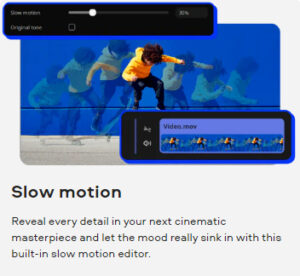Here are some general expectations you might have for Movavi’s AI motion tracking feature:
- Object Tracking:
- AI motion tracking typically allows users to identify and track specific objects or elements within a video. This can be useful for following a moving subject or maintaining focus on a particular item throughout the video.
- Automated Tracking:
- Movavi’s AI motion tracking might automate the tracking process, reducing the need for manual adjustments. The software may use artificial intelligence to analyze the movement patterns and adjust the tracking accordingly.
- Smooth Transitions:
- The AI motion tracking feature should help in creating smooth transitions and keeping the tracked object centered within the frame, providing a professional and polished look to the video.
- Ease of Use:
- A user-friendly interface is crucial for any motion tracking tool. Movavi’s implementation is likely designed to be intuitive, allowing users to apply motion tracking with ease.
- Integration with Other Editing Tools:
- The AI motion tracking feature may integrate seamlessly with other video editing tools provided by Movavi, allowing users to combine motion tracking with various effects, transitions, and editing options.
- Adjustable Parameters:
- Users may have the ability to adjust parameters related to motion tracking, such as tracking speed, sensitivity, or the size of the tracked area. This flexibility allows for customization based on specific video requirements.
- Export Options:
- Once the motion tracking is applied, the software should provide options for exporting the final video with the tracked motion. Compatibility with different video formats and resolutions is essential.



